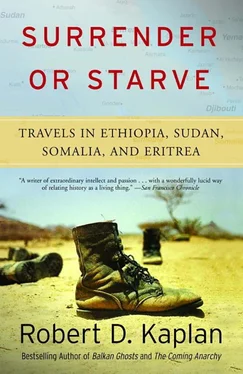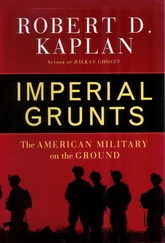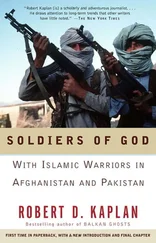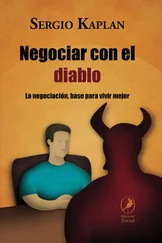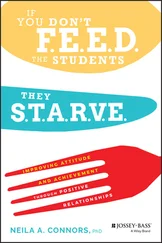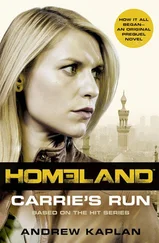Fatma Abdullah Ahmed, the mother of four children, had buck teeth. The top of her head was covered with a cheap orange shawl, and in her hand she held a string of prayer beads. The trouble for Mrs. Ahmed began in late 1984, when U.S. citizens began a massive outpouring of aid to famine victims in another part of Ethiopia, in response to dramatic television pictures and pleas for help from the Mengistu government. Flies buzzed around Mrs. Ahmed’s lips as she spoke.
I am from the village of Bakallan, near Babile, where there was no abar [drought], only oppression. When the Amhara soldiers first came to our village they destroyed the school and took all the children—about a thousand—to another school, twelve hours east by foot in Abdur Kader, near Arrir. The soldiers said it was a better school. On Saturdays and Sundays the children were allowed to walk home.
Later the soldiers came again. My family had four goats and eight oxen. The soldiers slaughtered the big oxen and ate them. We had to pay the soldiers 12 birr every week to guard the smaller ones. Some of our neighbors had cows. There were several Christians in our area. The soldiers made the Christians slaughter the cows of the Moslems, and the Moslems those of the Christians. This was against our tradition.
The soldiers explained that socialism meant that everything had to be shared equally. They ordered every wife in the village to sleep with another husband, not her own. We were afraid. We told them we accepted, but we didn’t do it. So the soldiers made intercourse compulsory. Then went into every gambisa [mud hut] to watch. They said, “Do it, do it.” Those who did not were beaten with fists. The prettiest girls were taken by the soldiers. Our own soldiers [Oromos recruited into the national army] were just as bad as the Amharas: you see, these Oromos were not from our area.
The soldiers said no one could read the Koran, because it is Arab politics. The mosque was turned into an office for the soldiers. Seventeen sheikhs in the area were shot; each was the leader of a farmers’ group. Their hands and feet were bound and they were buried in one long trench. The soldiers used a dozer [bulldozer] to fill in the dirt.
Then [in late 1985, a year after the school was destroyed] our maize was collected by the soldiers and taken for storage. We never saw it again. Party cadres destroyed our gambisata [mud huts]. The smaller oxen and the goats were killed. The soldiers had cameras. Like white people, the Amharas are always taking pictures.
We were marched three hours by foot eastward where we were made to build new gambisata in a straight line. The new town was called Gamaju [Oromo for gladness]. Unlike Bakallan, there was no water nearby. We had to walk a long way for water. We worked from dawn till dusk planting yams and maize. The men were taken every day to work in a place called Unity farm. We were hungry and complained to the soldiers. They said, “Eat your flesh.” Vehicles came daily to bring food to the soldiers. Occasionally, they would give biscuits to the women they had raped….
[In late February 1986] we escaped after midnight. It was raining and there were no stars. We ran from the few soldiers who were not sleeping. There were many of us. The men carried the children. After walking through the night we spent the day at Dakata, a place the Ethiopian soldiers were afraid to go because it was frequented by the WSLF [Western Somali Liberation Front]. …The second afternoon the Ethiopian soldiers found us at the end of a forest. We all ran. Nine were caught. …The eighth night [in March 1986] we crossed the border. We are afraid to go back. It is better to die here.
Mrs. Ahmed’s new home was a tent in the Oromo refugee camp of Tug Wajale B, which was due west of the Somali town of Hargeisa and five miles from the Ethiopian border. At the end of 1986, the camp was a breeding ground for scurvy, hepatitis, relapsing fever, tuberculosis, cholera, pneumonia, diarrhea, and conjunctivitis. Only malaria, usually the most common illness in black Africa, was surprisingly rare. International relief officials were embarrassed about the sanitation situation at the camp. The smell of ordure was all around; wherever one looked, people were defecating. But the refugees at Tug Wajale B complained less than had those at better equipped camps I visited. Indeed, explained Halima Muhumed Abdi, another mother of four, “all this is nothing compared to the disaster that we’ve suffered.”
The 50,000 Oromo refugees were among the three million “villagized,” according to the Ethiopian government’s own reckoning. But the collectivization of the Oromos never registered on the U.S. consciousness. Although the major U.S. newspapers all published at least one article about the Oromos’s situation, the people at Tug Wajale B never made the news on any of the three major networks in the United States. Not only didn’t Tug Wajale have good visual possibilities for television, but its story unfolded too late, occurring in 1986, after the famine had peaked and interest in the Oromos’s situation had gone into remission. The few U.S. journalists who did make the journey to the Somali-Ethiopian border tended to emphasize the awful conditions of the camp, rather than what had driven the refugees there in the first place.
The U.S. Embassy in Addis Ababa was roused into action not by anything the media uncovered, but as a result of interviews with the refugees, conducted several months before I visited Tug Wajale, by Jason W. Clay, the research director of Cultural Survival, an independent human rights organization based at Harvard University. The embassy investigated the matter of human rights violation against the Oromos to the greatest degree possible, given the restrictive conditions in a country that, more than any other in Africa, approximated the Soviet model. The investigation drew a blank; it could neither confirm nor confute the refugees’ horror stories. “We will never really know the truth about villagization,” the administrator of the U.S. Agency for International Development (USAID), M. Peter McPherson, admitted to me. The issue died before it was ever raised, lost in a heap of other cruelties for which the West had no independent confirmation.
In the final analysis, the accounts given by the refugees made little impact. The road to the edge of the earth never became well trodden. Eventually, many of the Oromos were moved out of Tug Wajale and dispersed to other camps strung out along the Ethiopian border. Sand covered their tracks.
“There is an air of nightmarish fantasy about affairs in Ethiopia,” wrote Alan Moorehead in The Blue Nile, referring to events of the late eighteenth century. But as the refugees’ stories indicate, the “medieval melodrama” has been heightened by a chilling, twentieth-century thoroughness and precision. Progress, as so often happens, has been inverted by ideology; the passions that stir the rulers of present-day Ethiopia are perhaps even more difficult for a middle class, Western mind to grasp than those of tyrants from previous epochs. It is doubtful whether the U.S. public understands Ethiopia, Sudan, or the rest of Africa much better now than it did before the famine emergency started in October 1984. Beginning then and continuing through the middle of 1985, the public was bombarded with images of people starving in an exotic land, images that gripped viewers by the throat and elicited a more emotional audience response than had occurred in relation to any other foreign news story of recent years. The result was that U.S. citizens and their government flooded Ethiopia and neighboring Sudan with aid, the procurement, use, and misuse of which provided the media with most of their story. It was, in short, a U.S. story, about U.S. involvement in Africa.
But that was only the external side of the drama. The internal dimension—famine as a manipulated consequence of war and ethnic strife—was passed over. Newspapers and television left unwritten and unfilmed what both media initially were designed to capture: history in the making. A country in Africa, the first to do so, was in the long, bloody process of converting to communism— as completely as had Cuba and Vietnam. The architects of this transformation, as we shall discover, were encountering stiff resistance from guerrillas who were better trained and inflicted more damage in bigger battles than did similar groups in southern Africa and Central America. This was not, in the parlance of old Africa hands, just another “ bongo war.” The technical and organizational abilities of the combatants, who were beneficiaries of the only culture in black Africa with a written language that went back two thousand years, resulted in masterfully fought, albeit ignored, set-piece battles involving tanks and fighter jets. War and the mass population movements it engendered were the main features of the Ethiopian landscape. Ethiopia was reenacting the experience of Soviet Russia in the years following the overthrow of the czar, when the new communist rulers battled a host of rebel armies in order to maintain a reactionary nineteenth-century empire. Famine, as in USSR, was a partial consequence of this historic struggle. But almost none of this got through to the U.S. audience. The media were more interested in the politics of relief agencies than in the politics of Ethiopia.
Читать дальше
